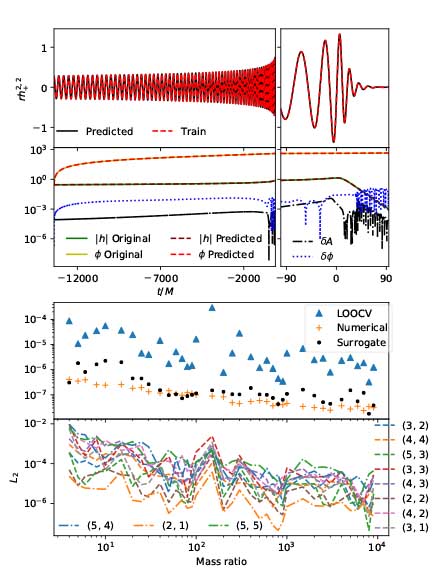Gravitational waves are “ripples in the fabric of space-time” that were predicted by Einstein over a century ago. These waves were directly observed by the US LIGO detector in 2015 — a major discovery that resulted in the founders of the project receiving a Nobel Prize in 2017. Currently, LIGO routinely makes multiple detections of these waves every month, thus opening a new window onto fascinating astrophysical objects like black holes and neutron stars. In addition, several next generation gravitational wave detectors are being planned including a space-borne variant called LISA.
Gravitational waves are produced when two black holes or neutron stars violently smash into each other, causing a major disturbance in space-time. LIGO scientists need to know what the gravitational wave signal should look like in order to reliably search for it in their data. Computational models are used to simulate so-called “template” signals from systems like binary neutron stars or black holes using Einstein’s General Relativity theory.
Researchers at the University of Rhode Island and UMass Dartmouth (https://web.uri.edu/gravity) are developing a fast machine-learning inspired computational model that will help extend the range of the black hole binary systems that LIGO can reliably search for. Until now, it was difficult to make predictions of what the gravitational wave signal would like from the merger of two black holes, especially if one was much larger than the other. This model allows scientists to generate precise template signals from such systems at an impressively fast rate! In this OSN data repository, all the high-quality “training” data that is being used to build this computational model is stored and shared with the contributing researchers including groups at URI, UMass, MIT and Max Planck Institute in Germany. This training data was generated using expensive, high-quality simulations using large HPC systems at the MGHPCC and also using ORNL’s Summit — the fastest supercomputer in the US.
Computational model may be obtained here: https://bhptoolkit.org/EMRISurrogate
Original publication: https://dx.doi.org/10.1103/PhysRevD.101.081502
Story in Wired Magazine: https://www.wired.com/story/a-new-math-shortcut-helps-describe-black-hole-collisions/

